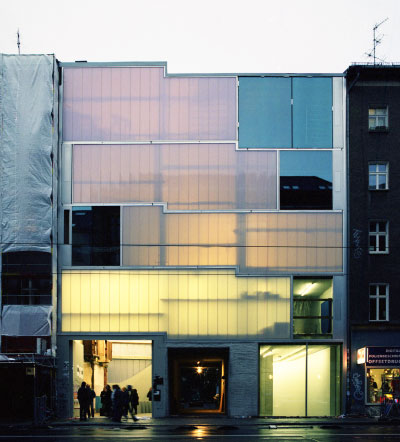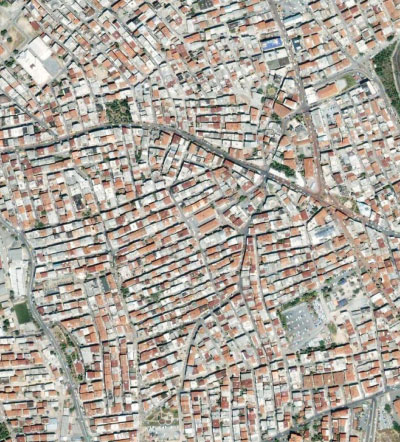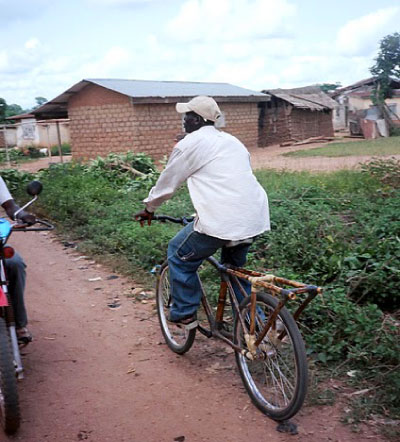
Two young American filmmakers traveled and filmed in rural Haiti for five weeks before the earthquake, and they’ve now decided to release the resulting 40-minute documentary to view for free over the Internet. In doing so, they hope to inform the world about the deep, systemic poverty that existed in rural Haiti even before the devastating earthquake, as well as the community spirit and hope that persisted in spite of it. The filmmakers’ synopsis describes the film as such:
The first interview introduces Sandelwi, a farmer and a mystic, who is riding on top of a bus that is speeding around the treacherous curves of the mountainous road to Port-au-Prince, mindless of the precipitous drop to the valley below. ‘When you’re in Haiti, I consider you Haitian,’ he says. ‘It’s up to us, we have to put our heads together to do development.’ … The Road to Fondwa is not a one-way street, but rather a conduit between two very different, yet intricately connected nations.
The film’s exploration of America’s role in creating the perilous political and economic situation in Haiti before the earthquake serves as a potent reminder of our continuous responsibility to help. Head over to the film’s website, to view The Road to Fondwa and/or purchase the DVD (all proceeds go to Partners in Health). And as always we urge you to continue to help the Haiti recovery by donating to reputable relief organizations like Oxfam and Doctors Without Borders.


The new building at Brunnenstraße 9 in Berlin’s Mitte district was recently hailed by Artforum Magazine as “a retroactive manifesto of ’90s-era hypercontextualism” and, more simply, “gorgeous”. What their praise didn’t recognize, however, is that this mixed-use space is not just something to look at but a building to listen to; passers-by can plug their headphones into the inconspicuous silver jack embedded in the building’s concrete and literally hear the otherworldly orchestrations of the structure itself.
For the permanent sound installation, titled BUG, American artist Mark Bain embedded seismological sensors at various points of the building. Using a force-feedback system, he then converts the micro-vibrations the sensors pick up into audible sound that can be heard by anyone, at any time of day or night — provided they bring their own headphones. External elements such as wind or rain, as well as the mechanical sounds of the elevator, heating system, and underground metro — in addition to footsteps and muffled voices — are all picked upand mixed into an impromptu, experimental composition. Upon hearing the sound, some listeners dance; others have claimed that it gives them goosebumps.
(more…)

Arial photography of Nenehatun Esenler in Istanbul Courtesy of Urban Age, London School of Economics

With the deliberately provocative proposition that New York is “almost all right”, the first Urban Age series of conferences on the future of the world’s cities started off with a bang in 2005. In the five years since, the conferences have taken place in nine “megacities” (defined as a city with a population of over 3 million) around the world. In each, the present state, and future, of a city is debated from all angles by scientists, sociologists, urban planners, geographers, and economists, among others.
Citing surprising and sobering statistics — more than half the world population currently lives in cities; urban areas contribute 75 percent of human carbon dioxide output into the atmosphere — Urban Age posits that the fate of cities in the 21st century will determine not only the fate of human lives but the future of our planet. Urban Age therefore aims to influence the ideas of city policy-makers and planners to create more socially responsible and environmentally sustainable urban practices — to create, in their words, a “grammar of success for metropolitan areas”.
The amount of information gathered at each conference is staggering. The issues range from the large-scale (investment and economic development, sustainability and energy consumption) to the particulars (public life and urban space, housing and neighborhoods). It’s all beautifully presented online for urban dwellers to access at urban-age.net.
(more…)


There’s a distinctive project in the works to bring sustainable development to developing countries, and it combines two things rarely found in the same sentence: bamboo and bicycles. The Bamboo Bike Project aims to help people in impoverished countries by teaching them how to make their own bikes out of — that’s righ t— bamboo.
Bamboo is the largest member of the grass family and the fastest growing plant on earth (shoots can grow more than two feet per day). The self-replenishing speed with which it grows makes it an ideal and sustainable construction material in impoverished, tropical countries. Or anywhere for that matter. It’s also exceptionally strong, and makes a surprisingly lightweight bicycle. Co-founders John Mutter and David Ho initially learned to make the bikes from a man who wanted to sell the bikes as a boutique item to wealthy customers. Rather than keep the bamboo bikes a niche item, Mutter says, “Our objective is to make them in large numbers and sell them for as little as possible.”
“I’ve been to Africa and some other poor places,” continues Mutter, “and if you’ve ever been to a place like that you realize that while bicycles [in rich countries] are just sort of personal transportation and a means of getting exercise, anywhere where incomes are low they represent a lot more than that.”
(more…)




 Facebook
Facebook Permalink
Permalink Digg
Digg Reddit
Reddit LinkedIn
LinkedIn StumbleUpon
StumbleUpon Tumblr
Tumblr




